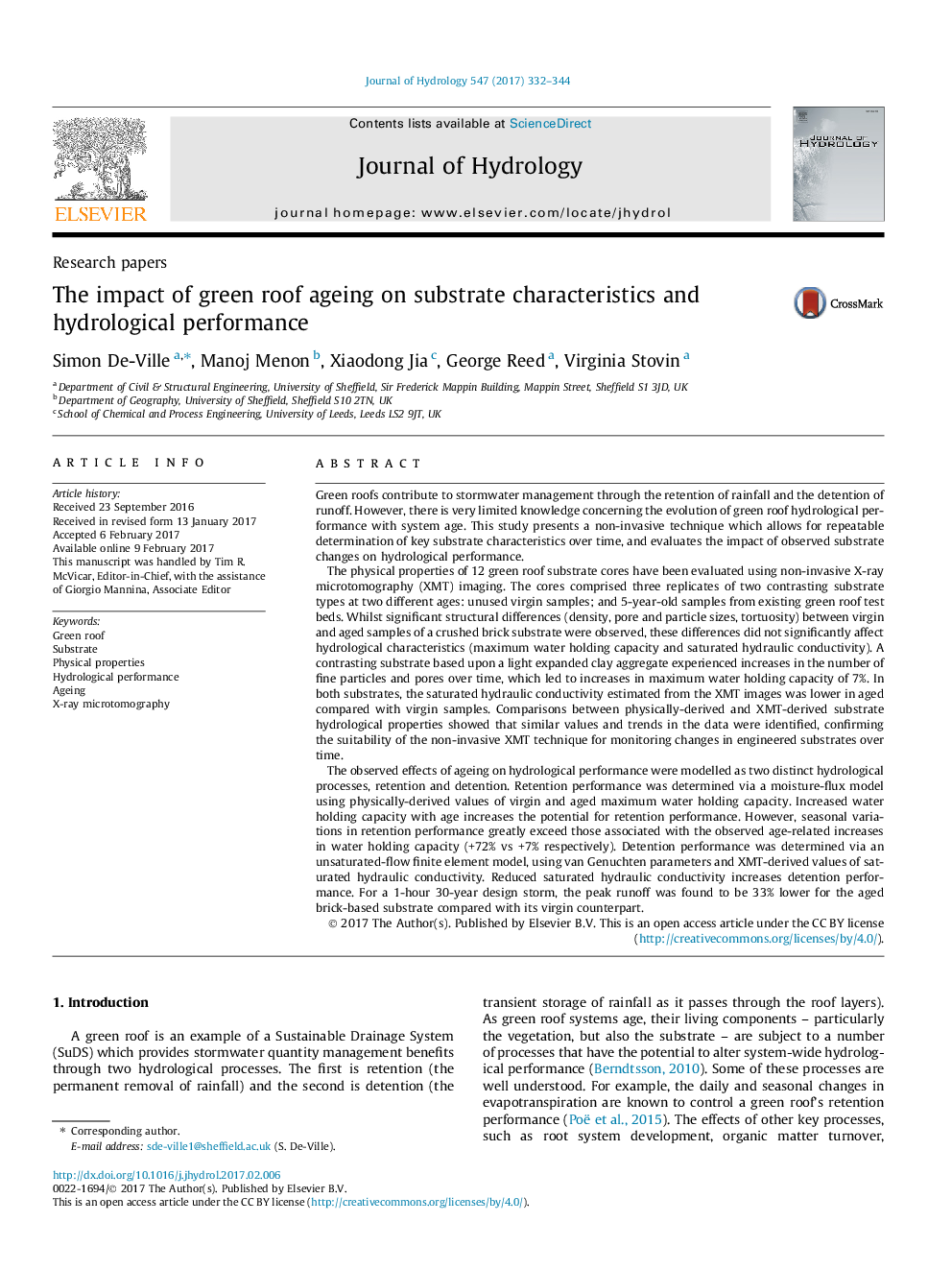| Article ID | Journal | Published Year | Pages | File Type |
|---|---|---|---|---|
| 5771049 | Journal of Hydrology | 2017 | 13 Pages |
â¢Aged substrates have properties that support enhanced hydrological performance.â¢Changes over 5 years are minor compared with natural variations due to climate.â¢Hydrological performance has not declined after 5 years of operation.â¢X-ray microtomography is a powerful tool for exploring substrate properties.
Green roofs contribute to stormwater management through the retention of rainfall and the detention of runoff. However, there is very limited knowledge concerning the evolution of green roof hydrological performance with system age. This study presents a non-invasive technique which allows for repeatable determination of key substrate characteristics over time, and evaluates the impact of observed substrate changes on hydrological performance.The physical properties of 12 green roof substrate cores have been evaluated using non-invasive X-ray microtomography (XMT) imaging. The cores comprised three replicates of two contrasting substrate types at two different ages: unused virgin samples; and 5-year-old samples from existing green roof test beds. Whilst significant structural differences (density, pore and particle sizes, tortuosity) between virgin and aged samples of a crushed brick substrate were observed, these differences did not significantly affect hydrological characteristics (maximum water holding capacity and saturated hydraulic conductivity). A contrasting substrate based upon a light expanded clay aggregate experienced increases in the number of fine particles and pores over time, which led to increases in maximum water holding capacity of 7%. In both substrates, the saturated hydraulic conductivity estimated from the XMT images was lower in aged compared with virgin samples. Comparisons between physically-derived and XMT-derived substrate hydrological properties showed that similar values and trends in the data were identified, confirming the suitability of the non-invasive XMT technique for monitoring changes in engineered substrates over time.The observed effects of ageing on hydrological performance were modelled as two distinct hydrological processes, retention and detention. Retention performance was determined via a moisture-flux model using physically-derived values of virgin and aged maximum water holding capacity. Increased water holding capacity with age increases the potential for retention performance. However, seasonal variations in retention performance greatly exceed those associated with the observed age-related increases in water holding capacity (+72% vs +7% respectively). Detention performance was determined via an unsaturated-flow finite element model, using van Genuchten parameters and XMT-derived values of saturated hydraulic conductivity. Reduced saturated hydraulic conductivity increases detention performance. For a 1-hour 30-year design storm, the peak runoff was found to be 33% lower for the aged brick-based substrate compared with its virgin counterpart.
